The word ‘adventure sports’ reveal the meaning themselves. They are thrilling and adventurous. They give a participant a brush with death and a feeling of both fear and pleasure.
Adventure sports or extreme sports range from extreme water sports like river rafting to land activities like Rock climbing, mountaineering, etc. Therefore, these activities are addictive and peaceful to some and horrifying for others.
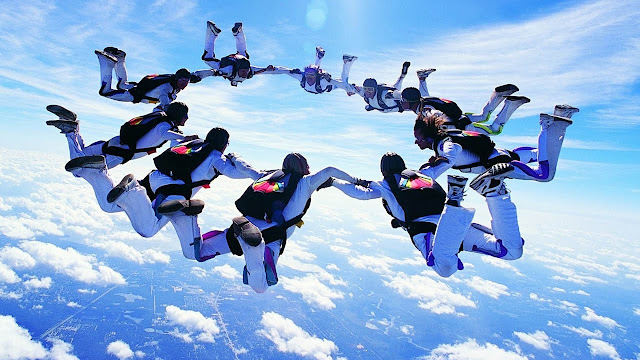 |
| Adventure sports |
India is rapidly emerging as a preferred destination for joyful adventure sport as it is with mind boggling geographical diversity and vibrant landscape. Mountains, beaches, seas and deserts are all perfect possibilities for adventure sports.
Every emotion plays a key role in life, and the one that comes with excitement is definitely for the brave. For all the thrill seekers, adventure sports have become a beloved way to fulfil their cravings for more excitement.
Types of Adventure sports
Adventure sports are primarily divided in three categories:
- Land based adventure sports.
- Camping
Camping is an outdoor recreational activity. The participants leave urban areas, their home region or civilization and enjoy nature while spending one or several nights outdoors, usually at a campsite.
Camping may involve the use of a tent, caravan, motor home cabin, a primitive structure or no shelter at all. Camping is often enjoyed in conjunction with activities such as canoeing, climbing, fishing, hill walking, mountain biking, hiking etc. or as a series of activities from a Central location.

Camping Camping as a recreational activity became popular in 20th century. Camping is a key part of many youth organisations around the world such as scouting. It is used to to teach self-reliance, teamwork and first hand experience with nature. Camping is also used as an inexpensive form of accommodation for people attending large open air events.
Material requirements for camping:
- Shelter like – tent, ground cloth, poles etc.
- Bedding like – sleeping bag, sheets, blankets, and pillow.
- Cooking like – spatula, knife, spoon etc.
- Basic first aid like – Roll bandages, adhesive tape, antiseptic wipes etc.
Check for complete list of material required for camping
- Rock Climbing
Rock climbing is an extreme sports in which participants climb up, down or across natural Rock formations or artificial rock walls. The goal is to reach the summit of a formation or the endpoint of a predefined route without falling. To successfully complete a climb one must return to base safely.
Due to length and extended endurance required, accidents are more likely to happen. Rock climbing competitions have objectives of completing the route in the quickest possible time or the farthest along an increasingly difficult route.
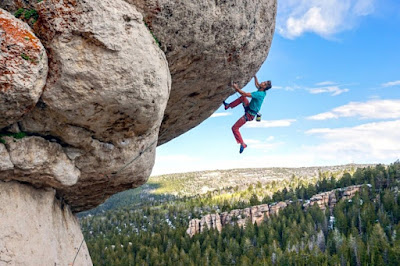
Rock climbing Rock climbing is a physically and mentally demanding sport, one that often tests a climber’s strength, endurance, agility and balance along with mental control. It can be a dangerous sport and knowledge of proper climbing techniques and uses of specialized climbing equipment is crucial for the safe completion of routes.
Because of the wide range and variety of rock formation around the world, rock climbing has been separated into several different styles and sub disciplines. While not an Olympic event, rock climbing is recognized by the International Olympic Committee as a sport.
Material requirements for rock climbing:
- Rappel devices (descenders) like – Figure eight, rescue eight, rappel rack.
- Protection devices like – Nuts, hexes, tricams.
- Training equipment like – Grip savers, fingerboards etc.
- Miscellaneous equipment like – gear sling, bottled oxygen, tents, torch, flashlight, sleeping bag, life jacket etc.
Check for complete list of material required for rock climbing
- Mountaineering
Mountaineering or mountain climbing is the sport of hiking, skiing and climbing mountains. All mountaineering requires experience, athletic ability and technical knowledge to maintain safety. Mountaineering is a sport that combines climbing and hiking up mountains done on regular terrain, rocky areas and ice or snow slopes.
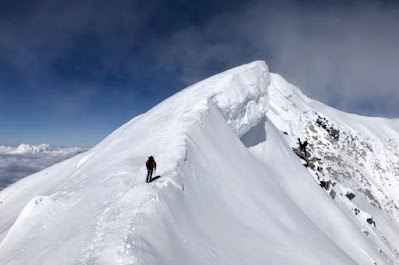
Mountain climbing This sport has many hazards, which are often divided into three main groups : weather, falling, and avalanches. Weather is one of the primary dangers of mountaineering and blizzards may cause poor visibility, leading to climbers getting lost or falling into the void.
Even in summer, weather can be deadly, since lightning is likely to strike on the highest points, including mountain tops and rock edges. Besides snow, avalanches can consist of falling rocks, ice and even gear.
Falling rocks are much more common danger then snow avalanches, they are also a lot harder to predict, which exposes climbers to a higher risk. Climbers also run the risk of slipping on the ice and falling.
Material requirements for mountain climbing:
- Warm clothing like – socks, gloves, face mask, climbing boots with crampons.
- Protection devices like – ice screws, nuts, slings etc.
- Miscellaneous equipment like – first aid kit, sunscreen and lip salve, goggles, tent etc.
Check for complete list of material required for mountain climbing
- Trekking
Trekking is a category of adventure travel, typically involving visits to remote areas, with overnight lodging in tents or other minimal accommodation. It is less strenuous than hiking but more strenuous than walking.
Tracking can be defined as “to travel by foot through remote destinations that are, in most cases, inaccessible and unknown to the visitor.” This type of holiday is mainly taken in mountainous regions.
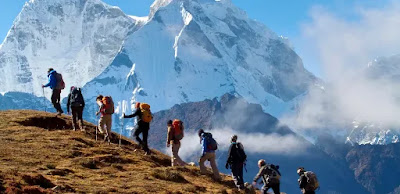
Trekking Trekking is a rapidly expanding segment, with increasingly active travellers looking for challenges that do not necessarily require specialist equipment or a guide, although still offer a considerable physical challenge and a sense of achievement at the end.
Material requirements for trekking:
- Shelter and bedding like – Tent, sleeping bag, sheets, blankets, pillow etc.
- Clothing like – a good pair of shoes, cap, windcheater (specially in rainy season) etc.
- Personal like – toothpaste and toothbrush, soap, wastepaper etc.
- Basic frst aid like – First aid box, anti dehydrate.
Check for complete list of material required for trekking
- Camping
- Water based adventure sports
- Surfing
Surfing is a surface water sport in which the wave rider, referred to as a surfer, rides on the forward or deep face of a moving wave, which is usually carrying the surfer toward the shore.
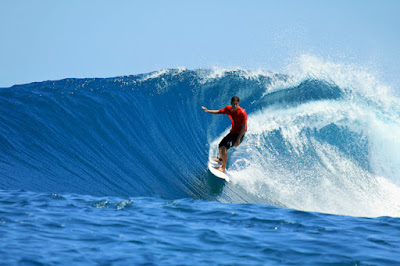
Surfing Waves suitable for surfing are primarily found in the ocean but can also be found in lakes or rivers in the form of a standing wave or Tidal bore. However, surfers can also utilize artificial waves such as those from boat wakes and the Waves created in artificial wave pool.
Material requirements for surfing:
- Surfing boards like – surfboards, stand up paddle boards, body boards, skim boards.
- Clothing like – swimsuits, surf trunks in warm climate and wet suits, boots, hoods and gloves in cold climate.
- Miscellaneous like – surf wax, traction pads, fins.
Check for complete list of material required for surfing
- River Rafting
River rafting or white water rafting is the challenging recreational outdoor activity of using an inflatable raft to navigate a river or other bodies of water. This is usually done on white water or different degrees of water, in order to thrill and excite the raft passengers.
The development of this activity as a leisure sport has become popular since the mid 1970s. It is considered an extreme sport, as it can be dangerous. A group of people maneuver paddles and struggle to stay afloat to avoid bowing down to the rapids formed in the river.
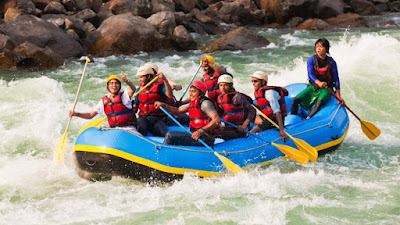
River rafting The rapids are classified in six classes – 1 to 6 – according to their level of difficulty. Class 1 is the gentlest, perfect for beginners, although they can easily advance to class 3 rapids in a short time. Classes 4 to 6 are very demanding, with challenges only for experts; here the margin of error and the rescue possibilities are minimal.
Material requirements for river rafting:
- Safety and rescue equipment like – life jacket, throw-rope, rescue bags, signal mirror.
- Basic first aid like – Triangular bandages, gauze rolls, assorted band-aids.
- Miscellaneous like – Waterproof bag, water bottle, sunglasses with safety strap, camera etc.
Check for complete list of material required for river rafting
- Surfing
- Air or aero Sports.
- Paragliding
Paragliding is the recreational and competitive adventure sport. A paraglider is an inflatable wing. The movement of air into the canopy inflates it and gives it its aerodynamic shape.
The paraglider is soft and can easily be packed into a bag and carried around. Its portability is its main advantage.
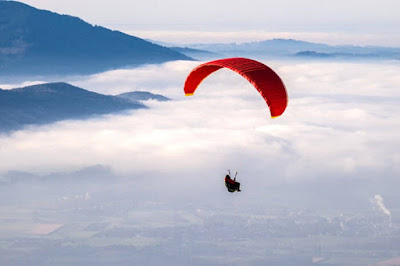
Paragliding The paraglider is laid out on the the ground at the top of the mountain on a gentle slope and facing into the wind. The Pilot is connected to the paraglider with the special harness. The paraglider is then full gently into the wind, which causes the canopy to inflate. The Pilot then takes a few brisk steps into the wind and floats gently up into the air.
Material requirements for paragliding:
- Safety and rescue equipment like – harness, emergency reserve system (parachute), safety helmet.
- Basic first aid like – Triangular bandages, gauze rolls, assorted band-aids.
- Miscellaneous like – GPS, flight deck, flight suit, hook knife etc.
Check for complete list of material required for paragliding
- Paragliding
Objectives of adventure sports
Adventure sports not only give fun and enjoyment but they also teach life lessons to individual. Major objectives of these sports are:
- Developing positive attitude towards life
Most adventure activities are individualized because each individual works at his own pace repeating a task as often as he likes leading to a series of successful achievements which in turn develop positive attitude towards life.
- Developing spirit of risk taking
Adventure activities contain a high level of danger. So, by indulging in adventure sports an individual develops the spirit of risk taking which helps in shaping life.
- Developing cooperation and teamwork
While participating in any of the extreme sports which involve group activities, one learns to co-operate and work as a team.
- Developing capacity to face challenges
Adventure sports develop the capacity to face and effectively deal with challenges. Therefore, one must take part in these extreme sports.
- developing courage and determination
One of the objective of adventure sports is to develop courage and determination. So, these sports help the participants to accept challenges with courage and move ahead with determination.
- Helps in development of self-confidence
Adventure sports are designed for an individual in such a way which develop self-confidence. People engaging in these sports activities compete with themselves and therefore have a great sense of accomplishment when they reach their goal. The sense of accomplishment boosts the self confidence of a person.
- Develop concentration
Through a series of experiences each individual forms habit of ability to concentrate.
- Healthy channelization of surplus energy
Extreme sports require high level of physical activity. Therefore, it provide a positive and healthy channelization of surplus energy of an individual.
- Development of curiosity and imagination
Adventure sports are helpful to develop curiosity and imagination of all participants as these sports give participants the chance to experience nature.
Tags adventure sports sports
